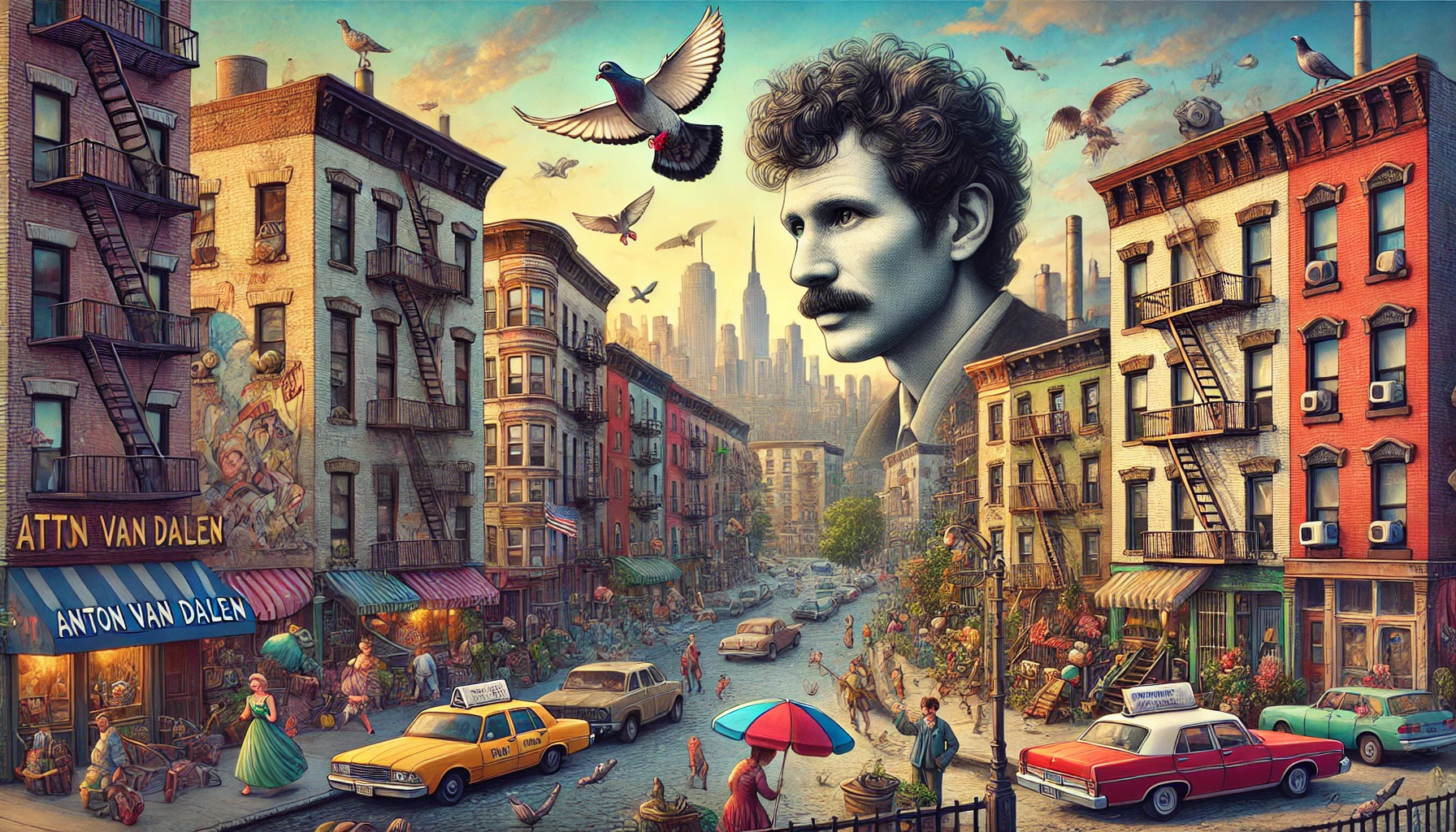Anton van Dalen, a beloved artist renowned for his poignant and vivid depictions of New York's East Village, passed away at the age of 86. Van Dalen, who had lived in the neighborhood for over five decades, died of natural causes in his sleep, according to his gallery, P.P.O.W.
Chronicling the East Village
Van Dalen's art captured the essence of the East Village, blending reality with fantasy to illustrate the dynamic and often tumultuous life of the neighborhood. His paintings frequently depicted the interplay of sunlight on apartment buildings or imagined scenes of urban strife, reflecting the profound changes that have affected the area since he moved there in 1971. Pigeons, a recurring motif in his work, symbolized both continuity and change, often shown soaring over rooftops and through desolate urban spaces. Van Dalen kept a pigeon coop on his roof, and these birds were both companions and subjects in his art.
In an interview with Artnet News, he spoke of his lifelong affinity for pigeons: “The pigeons have been my companions since I was a child. I had a childhood that was sort of independent, so the birds became my companions, and they also became the subject of my work over time.”
Early Life and Career
Born in Amstelveen, The Netherlands, in 1938, van Dalen's early years were marked by the trauma of Nazi occupation, during which his family's property was seized. In 1954, the family relocated to Toronto, and by 1966, van Dalen had settled in New York.
For thirty years, van Dalen worked as an assistant to Saul Steinberg, the renowned New Yorker cartoonist. This role was kept confidential until Steinberg's death in 1999. Van Dalen explained to Hyperallergic that this secrecy was influenced by Dutch cultural norms that emphasize personal space and individuality: “There’s this thing in Dutch culture that you’re supposed to leave room for people to be who they are. In other words, for me to be crazy, I have to leave room for you to be crazy too. You make a deal with other people in order to be yourself.”
Artistic Vision and Impact
Van Dalen's own art career began with Surrealist-inspired drawings, which stood in contrast to the Minimalism that dominated the art scene at the time. His work sought to capture the unique and sometimes chaotic environment of the East Village, including its iconic "Jesus Saves" signs, derelict buildings, and prevalent drug use. He likened the experience to living in an "occupied community," drawing parallels with his childhood under Nazi occupation.
The East Village's tight-knit art community welcomed van Dalen, leading to collaborations with alternative art spaces like ABC No Rio and collectives such as PAD/D and Group Material.
Martin Wong and David Wojnarowicz, prominent figures in the East Village art scene, played significant roles in encouraging van Dalen to emerge from his shell and actively engage with the artistic community around him.
Artistic Legacy
Van Dalen's artwork is often noted for its romantic strain, but it also carried a potent political message. His piece, "Avenue A Cut-Out Theatre," is one of his most famous works. First staged in 1995, this performance art piece used a model of his house to depict the transformation of the East Village, addressing issues like gentrification and displacement through the use of cut-outs. The work poignantly charted the neighborhood's evolution, blending personal and collective histories.
Another notable work is "Work & Nature," an enamel piece created in 1997 for the Nevins Street subway station in Brooklyn. This piece features images such as a hand punching numbers into a calculator, a mother smiling at her child, and a seamstress at work, celebrating the dignity and beauty of everyday labor. Van Dalen intended it as a tribute to the pride inherent in all forms of work, and it continues to be seen by thousands of commuters each day.
Final Thoughts
Anton van Dalen's deep connection to the East Village and his ability to capture its spirit and struggles have left an indelible mark on the New York art scene. His work not only documented the physical and cultural landscape of the neighborhood but also engaged with broader themes of urban change and social justice. Through his art, van Dalen provided a window into the soul of a community, offering both critique and celebration.
As his gallery, P.P.O.W., and the larger art community mourn his loss, they also celebrate the legacy of an artist who dedicated his life to chronicling the vibrant, ever-evolving tapestry of one of New York’s most storied neighborhoods. Anton van Dalen’s contributions to art and his beloved East Village will continue to inspire and resonate for years to come.

